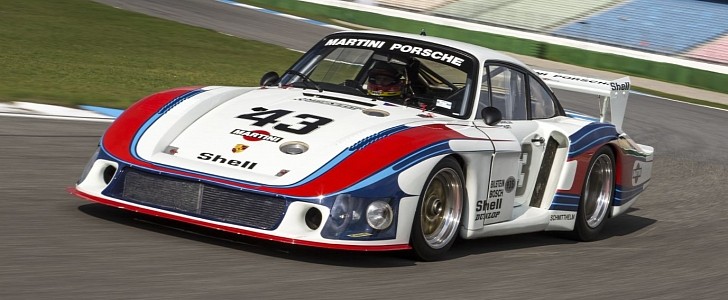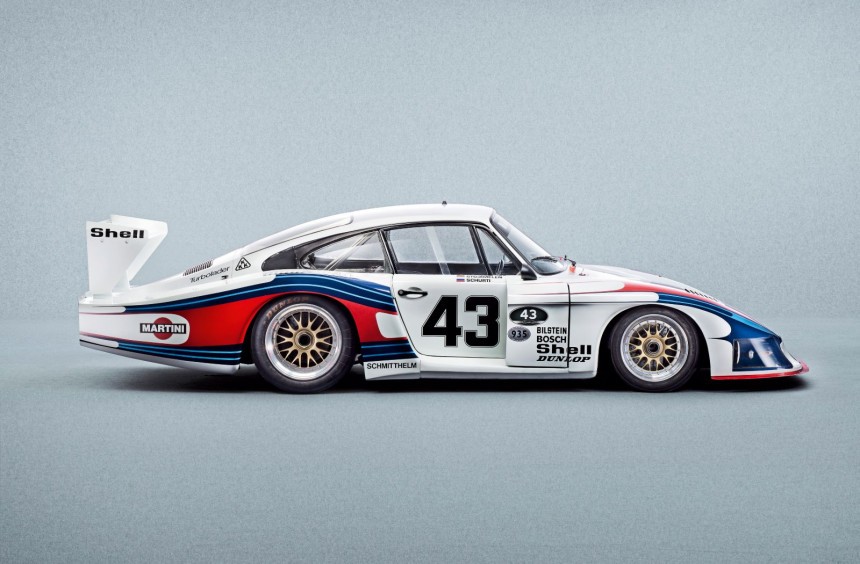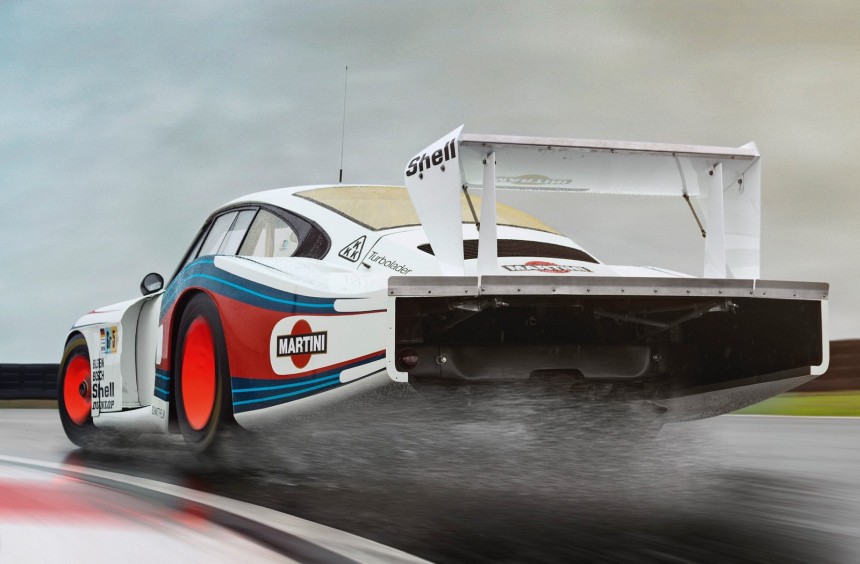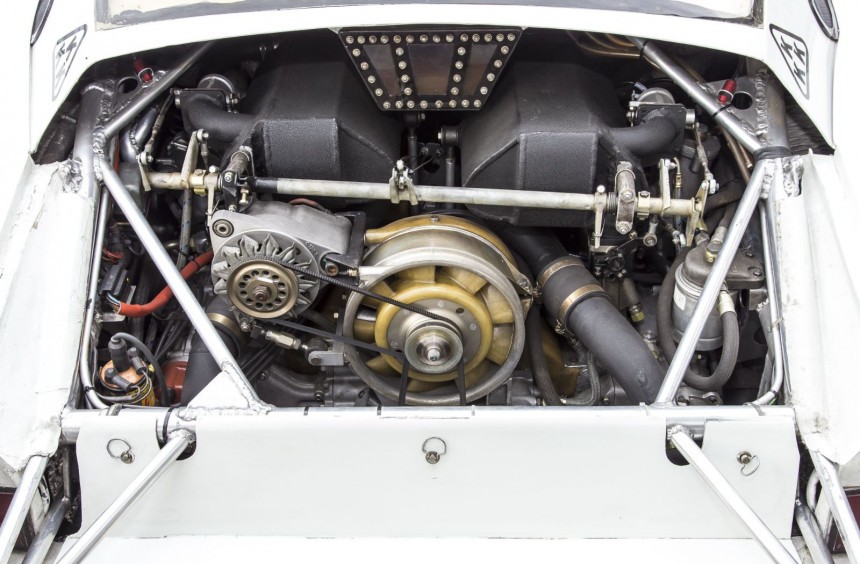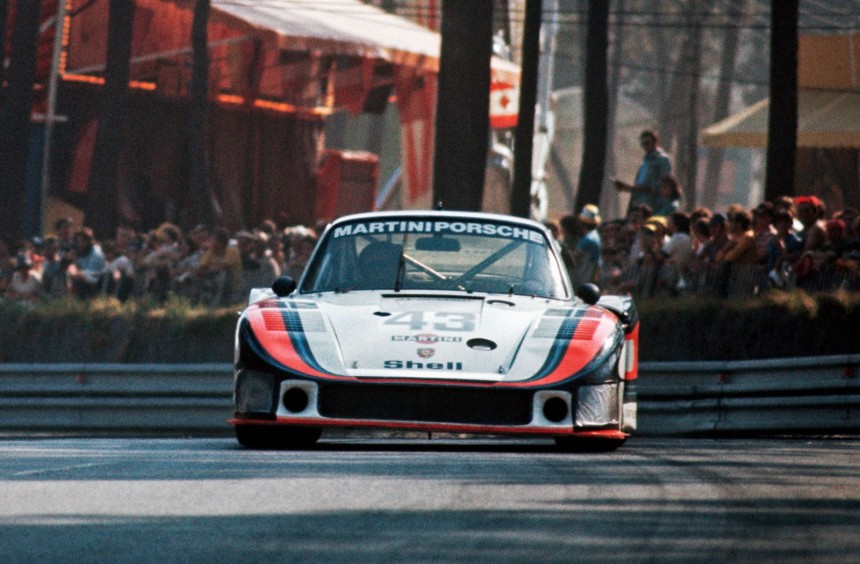Since the early 1950s when it introduced the 550 Spyder, Porsche has built many amazing racecars that brought them numerous titles and records. Conceived solely for Le Mans glory, the 1978 “Moby Dick” ultimately failed to deliver, yet its radical design and breathtaking top speed earned it a place in the history books.
In the 1970s, Porsche was unquestionably the biggest name in endurance racing. It had started the decade winning both the International Championship for Makes (Group 5 production-based cars) and International Cup for GT Cars (Group 6 prototypes) two consecutive times, an achievement that also included two triumphs at Le Mans. The Germans would go on to win the Group 6 competition every year until 1977, but Group 5 dominance was harder to achieve, with Ferrari, Matra, or Alfa Romeo claiming the title from 1972 to 1975.
For the 1976 season, the Zuffenhausen-based manufacturer was determined to put an end to the drought and developed an entirely new car. Based on the road-going 930 known as the 911 Turbo, it was dubbed 935 and it proved to be extremely successful, helping Porsche to reclaim the Group 5 crown. In addition, the 936 prototypes won the Group 6 title as well as Le Mans, which meant that Porsche became undisputed endurance racing champions once again.
In 1977, thirteen 935/77A racecars, all based on the 1976 version were sold to private teams. The factory-backed cars codenamed 935/77 were improved but were plagued by reliability issues and didn't win many races. Despite this, the customer cars kept racking up points, so Porsche managed to comfortably defend their Group 5 title. In the Group 6 competition - renamed World Championship for Sports Cars in 1976, the company decided to concentrate their efforts on Le Mans (which they won), and the sporadically-appearing 936 was defeated in the overall standings by Alfa Romeo’s Tipo 33 prototype.
This leads us to 1978, a season that saw the downgrade of the World Championship for Sports Cars from an international affair to a European championship that Porsche had no real interest in. Again, the motorsport division’s only focus was Le Mans, and in addition to an improved 936 open-top prototype, they would develop the third, final, and most outrageous version of the 935 for the legendary race.
Like its predecessors, it was loosely based on the 911 Turbo, yet it looked much different. The slant nose design of the front end was the result of a loophole in the regulations discovered by famed engineer Norbert Singer back in 1976. It allowed him to relocate the 935’s headlights to the front bumper, thus lowering the widened fenders and lining them up with the hood. These modifications dramatically reduced drag and with built-in vents, more downforce was also created. A similar front end couldn’t be implemented by Porsche’s rivals in the Group 5 class because their cars’ engines were mounted in the front. As a result, the 935 had a key aerodynamic advantage that led to its success, and naturally, the design was carried over to the 1978 Le Mans car.
The engineer’s ability to manipulate regulations didn’t stop there. FIA’s Group 5 guidelines (known as the silhouette rules) specified that the race cars could employ a wide range of body modifications, as long as the basic silhouette of the production versions they were based on remained unchanged when viewed from the front. With no rear-end design restrictions, Singer took the liberty of completely reshaping it, leading to the iconic long tail that drastically improved airflow and made the car extremely fast.
Still, the rule book did specify that the widows on the production car had to be kept on the racer. This was a problem because it would have affected the aerodynamics, but Singer had the brilliant idea to incorporate another rear window that sat atop of the factory one, enabling him to create the desired curvature of the rear bodywork. This was a feature that debuted on the 935/77 cars and was improved on the 935/78.
Another ingenious workaround made the car 10 cm (3.9 inches) lower than the production 911. Initially, the rules didn’t allow manufacturers to modify the door stills and specified that the exhaust had to exit behind the center of the wheelbase. Pressured by factory teams, FIA eventually allowed carmakers to modify the stills and lower their cars but kept the rear-exiting exhaust restriction in place. While rivals were limited by the piping system, which ran from the front-mounted engine to the rear, Porsche didn’t have this problem, so they were able to not only reduce the size of the stills but also shorten the entire floor pan.
Next up were the doors, which were initially widened to the same level as the front and rear fenders to avoid generating excessive air turbulence along the sides. This was another modification that juggled with the rulebook, but this time, FIA deemed it illegal. Singer went back to the wind tunnel and devised a couple of partial door covers that extended about 30 cm (12 inches) from the hinges, an FIA-sanctioned compromise that improved the 935/78’s airflow.
Before receiving its emblematic Martini ivery, the car was painted white and due to its shape, it immediately received the nickname “Moby Dick”, after the giant white sperm whale from Herman Melville’s famous 1851 novel.
It was powered by the latest evolution of the twin-turbocharged 3.0-liter, flat-six. The engine was bored out to 3.2 liters and gained a pair of brand-new cylinder heads. Due to the head gasket failures that afflicted the previous version, Hans Mezger - the leading powertrain engineer - decided to part ways with the traditional air-cooled units and came up with a water-cooled, four-valve design. Each head was welded to the cylinder bank, eliminating the need for a gasket, and allowing the boxer to withstand higher boost pressures.
Speaking of which, the Moby Dick used two KKK turbochargers with Porsche-designed waste gates, and the boost pressure could be adjusted from the cockpit. When set to the normal operating pressure of 21 psi (1.44 bar), the turbos helped deliver around 750 hp, but they were capable of 25 psi (1.72 bar), which translated to no less than 845 hp.
At first, Porsche considered racing the Group 5-compliant 935/78 in the World Championship for Makes but to avoid angering the private teams that invested huge amounts of money in their 935/77A racers, they eventually decided to only enter one race, the Kosset 6 Hours that took place on the Silverstone circuit. Shared by Jacky Ickx and Jochen Mass, it obliterated the competition, finishing seven laps ahead of the second-placed car. Equally impressive, it set the fastest lap in the race with a time of 1:23,98, just four seconds slower than the McLaren M23 Formula 1 car driven by James Hunt on the same track a year earlier.
Two months after Silverstone, the 935/78 arrived in France to take part in the race it was developed for. Donning number 43, it finished the qualifying session in third place, three seconds behind the leading 936 prototype. Unfortunately, a puncture, an oil leak, and high-fuel consumption led to more pit stops than initially planned, so it finished eighth overall. The Renault Alpine A442B came out victorious, with two factory 936 prototypes placing second and third. Moby Dick did manage to record a top speed of 367 kph (228 mph) on the Mulsanne straight, which made it the fastest car in that year’s race.
After Le Mans, it made a second appearance in the World Sportscar Championship for the competition’s final round held at Vallelunga, followed by the ADAC Norisring Trophy ‘200 Meilen von Nürnberg’ (200 miles of Nürnberg). Sadly, it failed to finish either race, and with Porsche’s factory team briefly retiring from motorsport, any further development was ceased.
While it never managed to live up to the expectations, the 935/78 “Moby Dick” earned its place among legendary racing machines for the ingenuity of its design and the mind-blowing speeds it could attain.
Today, the marvelous piece of engineering art can be admired in the Porsche Museum in Stuttgart. In 2019, it was reunited with Jochen Mass at Goodwood. You can see footage from the event in the YouTube video below posted by Goodwood Road & Racing’s official channel.
For the 1976 season, the Zuffenhausen-based manufacturer was determined to put an end to the drought and developed an entirely new car. Based on the road-going 930 known as the 911 Turbo, it was dubbed 935 and it proved to be extremely successful, helping Porsche to reclaim the Group 5 crown. In addition, the 936 prototypes won the Group 6 title as well as Le Mans, which meant that Porsche became undisputed endurance racing champions once again.
In 1977, thirteen 935/77A racecars, all based on the 1976 version were sold to private teams. The factory-backed cars codenamed 935/77 were improved but were plagued by reliability issues and didn't win many races. Despite this, the customer cars kept racking up points, so Porsche managed to comfortably defend their Group 5 title. In the Group 6 competition - renamed World Championship for Sports Cars in 1976, the company decided to concentrate their efforts on Le Mans (which they won), and the sporadically-appearing 936 was defeated in the overall standings by Alfa Romeo’s Tipo 33 prototype.
Like its predecessors, it was loosely based on the 911 Turbo, yet it looked much different. The slant nose design of the front end was the result of a loophole in the regulations discovered by famed engineer Norbert Singer back in 1976. It allowed him to relocate the 935’s headlights to the front bumper, thus lowering the widened fenders and lining them up with the hood. These modifications dramatically reduced drag and with built-in vents, more downforce was also created. A similar front end couldn’t be implemented by Porsche’s rivals in the Group 5 class because their cars’ engines were mounted in the front. As a result, the 935 had a key aerodynamic advantage that led to its success, and naturally, the design was carried over to the 1978 Le Mans car.
The engineer’s ability to manipulate regulations didn’t stop there. FIA’s Group 5 guidelines (known as the silhouette rules) specified that the race cars could employ a wide range of body modifications, as long as the basic silhouette of the production versions they were based on remained unchanged when viewed from the front. With no rear-end design restrictions, Singer took the liberty of completely reshaping it, leading to the iconic long tail that drastically improved airflow and made the car extremely fast.
Another ingenious workaround made the car 10 cm (3.9 inches) lower than the production 911. Initially, the rules didn’t allow manufacturers to modify the door stills and specified that the exhaust had to exit behind the center of the wheelbase. Pressured by factory teams, FIA eventually allowed carmakers to modify the stills and lower their cars but kept the rear-exiting exhaust restriction in place. While rivals were limited by the piping system, which ran from the front-mounted engine to the rear, Porsche didn’t have this problem, so they were able to not only reduce the size of the stills but also shorten the entire floor pan.
Next up were the doors, which were initially widened to the same level as the front and rear fenders to avoid generating excessive air turbulence along the sides. This was another modification that juggled with the rulebook, but this time, FIA deemed it illegal. Singer went back to the wind tunnel and devised a couple of partial door covers that extended about 30 cm (12 inches) from the hinges, an FIA-sanctioned compromise that improved the 935/78’s airflow.
It was powered by the latest evolution of the twin-turbocharged 3.0-liter, flat-six. The engine was bored out to 3.2 liters and gained a pair of brand-new cylinder heads. Due to the head gasket failures that afflicted the previous version, Hans Mezger - the leading powertrain engineer - decided to part ways with the traditional air-cooled units and came up with a water-cooled, four-valve design. Each head was welded to the cylinder bank, eliminating the need for a gasket, and allowing the boxer to withstand higher boost pressures.
Speaking of which, the Moby Dick used two KKK turbochargers with Porsche-designed waste gates, and the boost pressure could be adjusted from the cockpit. When set to the normal operating pressure of 21 psi (1.44 bar), the turbos helped deliver around 750 hp, but they were capable of 25 psi (1.72 bar), which translated to no less than 845 hp.
Two months after Silverstone, the 935/78 arrived in France to take part in the race it was developed for. Donning number 43, it finished the qualifying session in third place, three seconds behind the leading 936 prototype. Unfortunately, a puncture, an oil leak, and high-fuel consumption led to more pit stops than initially planned, so it finished eighth overall. The Renault Alpine A442B came out victorious, with two factory 936 prototypes placing second and third. Moby Dick did manage to record a top speed of 367 kph (228 mph) on the Mulsanne straight, which made it the fastest car in that year’s race.
While it never managed to live up to the expectations, the 935/78 “Moby Dick” earned its place among legendary racing machines for the ingenuity of its design and the mind-blowing speeds it could attain.
Today, the marvelous piece of engineering art can be admired in the Porsche Museum in Stuttgart. In 2019, it was reunited with Jochen Mass at Goodwood. You can see footage from the event in the YouTube video below posted by Goodwood Road & Racing’s official channel.
